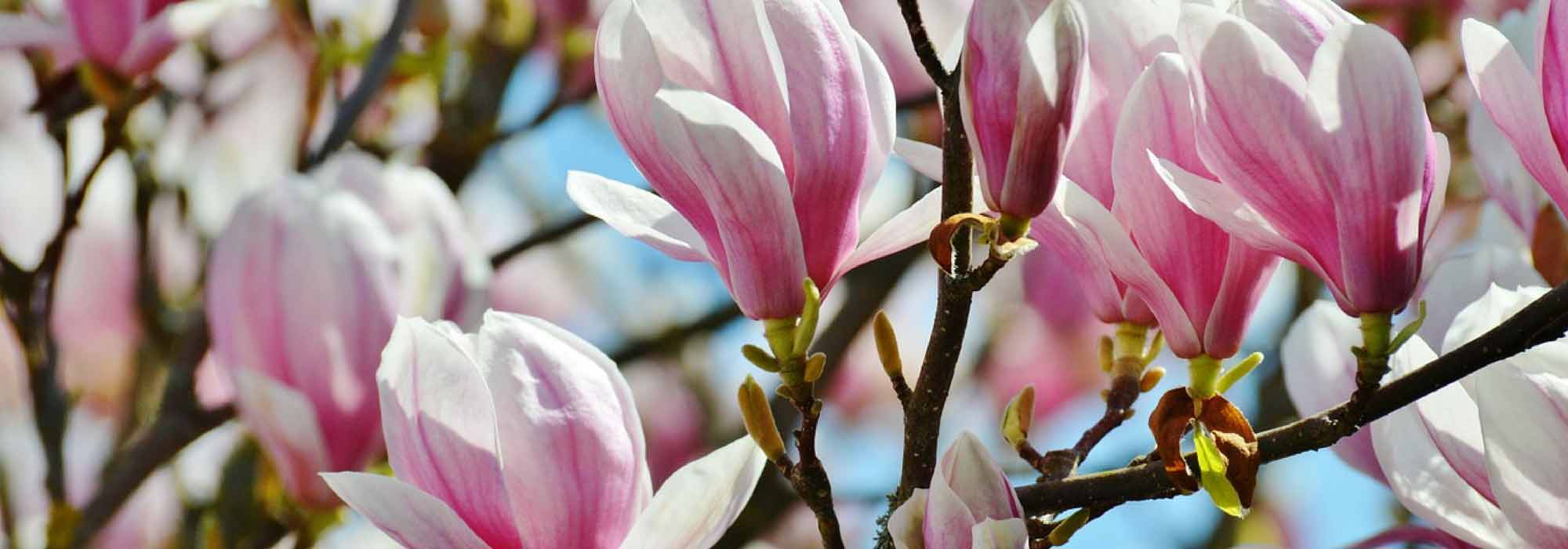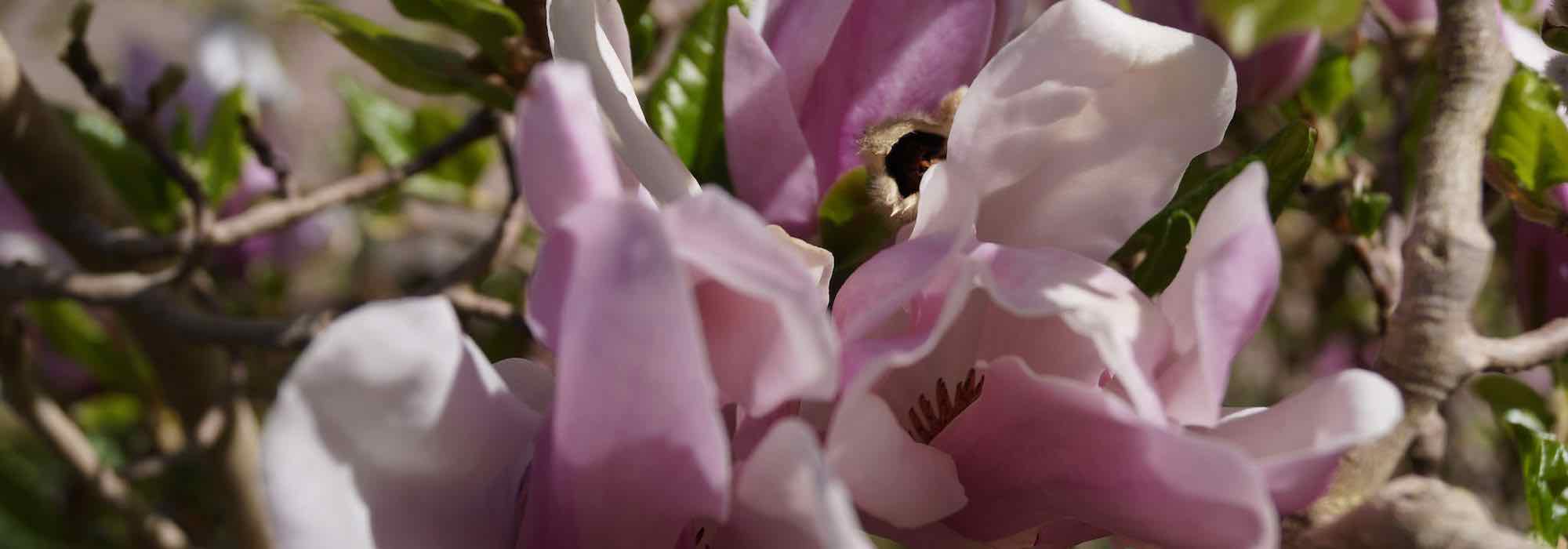

Magnolia laevifolia Vanilla Pearls® - - Michelia yunnanensis
Magnolia laevifolia Vanilla Pearls® - - Michelia yunnanensis
Magnolia laevifolia Vanilla Pearls®
Chinese Magnolia, Chinese Evergreen Magnolia, Michelia yunnanensis
Special offer!
Receive a €20 voucher for any order over €90 (excluding delivery costs, credit notes, and plastic-free options)!
1- Add your favorite plants to your cart.
2- Once you have reached €90, confirm your order (you can even choose the delivery date!).
3- As soon as your order is shipped, you will receive an email containing your voucher code, valid for 3 months (90 days).
Your voucher is unique and can only be used once, for any order with a minimum value of €20, excluding delivery costs.
Can be combined with other current offers, non-divisible and non-refundable.
Why not try an alternative variety in stock?
View all →This plant carries a 24 months recovery warranty
More information
We guarantee the quality of our plants for a full growing cycle, and will replace at our expense any plant that fails to recover under normal climatic and planting conditions.
Would this plant suit my garden?
Set up your Plantfit profile →
Description
The Magnolia laevifolia Vanilla Pearls® is a dwarf cultivar derived from the Michelia yunnanensis, now classified as Magnolia. It forms a bushy shrub, rounded, densely ramified, slow-growing, with particularly modest dimensions, as it does not exceed 70 cm in all directions at ripeness. Its decorative evergreen foliage, dark green and glossy, is covered in spring with fluffy and golden buds that open into an abundance of highly fragrant creamy white flowers, followed by a summer flowering, always popular with bees. Hardy down to -12°C, this variety prefers a sunny exposure and withstands drought well.
The Magnolia laevifolia or Michelia yunnanensis is a shrub close to the Magnolia native to China. It belongs to the Magnoliaceae family. The Vanilla Pearls® cultivar distinguishes itself from its wild ancestor by its much more compact habit and darker green foliage. It is a dense and bushy small tree, with a rather round crown. It features evergreen foliage composed of elongated to ovate, glossy and leathery leaves, of a beautiful dark green colour. Slow-growing, it only reaches 70 cm in height with a similar spread at maturity. Between April and June, it adorns its branches with fuzzy chamois-coloured buds, which bloom into large cream corollas, enhanced by prominent light yellow stamens, exhaling a delightful lemony fragrance. The flowering offers a lighter rebloom in summer, followed by decorative fruiting in the form of pink pods, opening to reveal shiny purple seeds.
The Magnolia Vanilla Pearls® is a shrub of great ornamental value, with many qualities, perfectly suited for container cultivation and small gardens. While it can be grown in partial shade, it prefers a full sun exposure and shows great resistance to drought and diseases, including leaf spots. In containers, ensure regular watering. In the garden, it can be planted in a group of shrubs, within a small flowering hedge or as a standalone in a formal garden. This species is easily shaped into topiary. Pair it with shrubs or perennial plants with white and yellow flowering to brighten up your flower beds or hedges! It will complement all heather soil shrubs (Rhododendrons, Japanese or Chinese Azaleas, Hydrangeas...), Magellan Fuchsias, Japanese Anemones or Lilies. At its base, you can, for example, plant Japanese Grasses or Liriopes.
Plant habit
Flowering
Foliage
Botanical data
Magnolia
laevifolia
Vanilla Pearls®
Magnoliaceae
Chinese Magnolia, Chinese Evergreen Magnolia, Michelia yunnanensis
Cultivar or hybrid
Other Magnolia
View all →Planting and care
The Magnolia Vanilla Pearls prefers humus-bearing soils, slightly acidic (Ph 6.5), rich in organic matter, moist but not waterlogged. It appreciates a sunny exposure. Its cultivation is possible in open ground in many regions as it is resistant to temperatures down to -12°C.
It is likely to regrow from the stump, well protected, in case the aboveground parts have been destroyed. Mulch the base to maintain freshness in hot climates, and water abundantly every 15 days in case of prolonged drought (avoid hard water). This bush tolerates transplanting poorly once established, so choose its location carefully.
Its appearance and growth will be very different depending on whether it is planted in open ground or in a container, and whether it grows in shade or in a sunny exposure. When developing in shade, its habit is more open and flexible, its foliage darker. If, on the contrary, it is exposed to the sun, it will show a more compact habit, denser foliage, smaller and lighter green leaves. When grown in a large container, its growth is limited. Watering should then be regular in summer, and greatly reduced in winter: in a cold greenhouse or conservatory, water (with low lime content) should be provided sparingly, only when the substrate is dry to a depth of 1 cm on the surface. The bush can be easily pruned after flowering. In late winter, before vegetation resumes, remove dead wood and tangled branches to retain only the vigorous branches and maintain a beautiful habit.
Planting period
Intended location
Care
Planting & care advice
This item has not been reviewed yet - be the first to leave a review about it.
Similar products
Haven't found what you were looking for?
Hardiness is the lowest winter temperature a plant can endure without suffering serious damage or even dying. However, hardiness is affected by location (a sheltered area, such as a patio), protection (winter cover) and soil type (hardiness is improved by well-drained soil).

Photo Sharing Terms & Conditions
In order to encourage gardeners to interact and share their experiences, Promesse de fleurs offers various media enabling content to be uploaded onto its Site - in particular via the ‘Photo sharing’ module.
The User agrees to refrain from:
- Posting any content that is illegal, prejudicial, insulting, racist, inciteful to hatred, revisionist, contrary to public decency, that infringes on privacy or on the privacy rights of third parties, in particular the publicity rights of persons and goods, intellectual property rights, or the right to privacy.
- Submitting content on behalf of a third party;
- Impersonate the identity of a third party and/or publish any personal information about a third party;
In general, the User undertakes to refrain from any unethical behaviour.
All Content (in particular text, comments, files, images, photos, videos, creative works, etc.), which may be subject to property or intellectual property rights, image or other private rights, shall remain the property of the User, subject to the limited rights granted by the terms of the licence granted by Promesse de fleurs as stated below. Users are at liberty to publish or not to publish such Content on the Site, notably via the ‘Photo Sharing’ facility, and accept that this Content shall be made public and freely accessible, notably on the Internet.
Users further acknowledge, undertake to have ,and guarantee that they hold all necessary rights and permissions to publish such material on the Site, in particular with regard to the legislation in force pertaining to any privacy, property, intellectual property, image, or contractual rights, or rights of any other nature. By publishing such Content on the Site, Users acknowledge accepting full liability as publishers of the Content within the meaning of the law, and grant Promesse de fleurs, free of charge, an inclusive, worldwide licence for the said Content for the entire duration of its publication, including all reproduction, representation, up/downloading, displaying, performing, transmission, and storage rights.
Users also grant permission for their name to be linked to the Content and accept that this link may not always be made available.
By engaging in posting material, Users consent to their Content becoming automatically accessible on the Internet, in particular on other sites and/or blogs and/or web pages of the Promesse de fleurs site, including in particular social pages and the Promesse de fleurs catalogue.
Users may secure the removal of entrusted content free of charge by issuing a simple request via our contact form.
The flowering period indicated on our website applies to countries and regions located in USDA zone 8 (France, the United Kingdom, Ireland, the Netherlands, etc.)
It will vary according to where you live:
- In zones 9 to 10 (Italy, Spain, Greece, etc.), flowering will occur about 2 to 4 weeks earlier.
- In zones 6 to 7 (Germany, Poland, Slovenia, and lower mountainous regions), flowering will be delayed by 2 to 3 weeks.
- In zone 5 (Central Europe, Scandinavia), blooming will be delayed by 3 to 5 weeks.
In temperate climates, pruning of spring-flowering shrubs (forsythia, spireas, etc.) should be done just after flowering.
Pruning of summer-flowering shrubs (Indian Lilac, Perovskia, etc.) can be done in winter or spring.
In cold regions as well as with frost-sensitive plants, avoid pruning too early when severe frosts may still occur.
The planting period indicated on our website applies to countries and regions located in USDA zone 8 (France, United Kingdom, Ireland, Netherlands).
It will vary according to where you live:
- In Mediterranean zones (Marseille, Madrid, Milan, etc.), autumn and winter are the best planting periods.
- In continental zones (Strasbourg, Munich, Vienna, etc.), delay planting by 2 to 3 weeks in spring and bring it forward by 2 to 4 weeks in autumn.
- In mountainous regions (the Alps, Pyrenees, Carpathians, etc.), it is best to plant in late spring (May-June) or late summer (August-September).
The harvesting period indicated on our website applies to countries and regions in USDA zone 8 (France, England, Ireland, the Netherlands).
In colder areas (Scandinavia, Poland, Austria...) fruit and vegetable harvests are likely to be delayed by 3-4 weeks.
In warmer areas (Italy, Spain, Greece, etc.), harvesting will probably take place earlier, depending on weather conditions.
The sowing periods indicated on our website apply to countries and regions within USDA Zone 8 (France, UK, Ireland, Netherlands).
In colder areas (Scandinavia, Poland, Austria...), delay any outdoor sowing by 3-4 weeks, or sow under glass.
In warmer climes (Italy, Spain, Greece, etc.), bring outdoor sowing forward by a few weeks.




































































